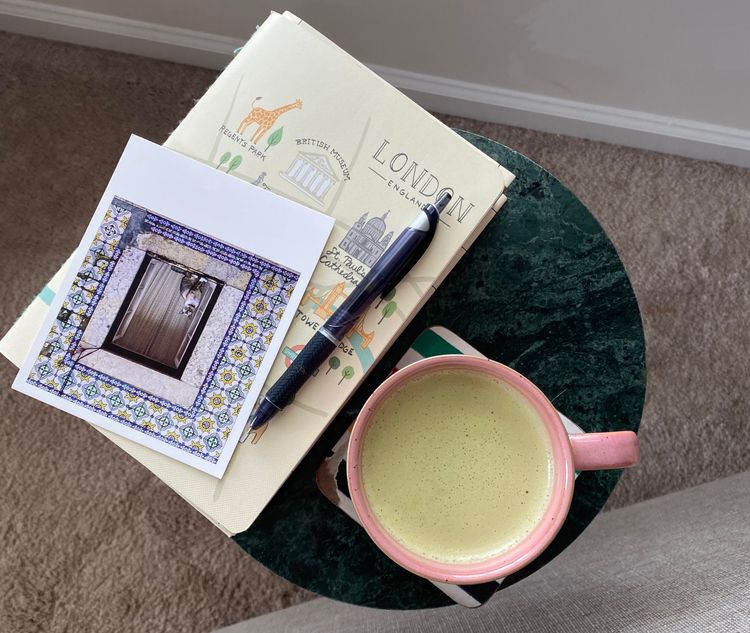How I Set Goals

I love goals, and I always have. Looking ahead to what I want to achieve and then doing the work to get there really works for me. (If you know anything about the enneagram, it’s clear why I’m an enneagram three.)
Goal setting has been a system I’ve used for almost ten years now. I’ve always had big plans, which can feel unattainable, so it feels more realistic to break those big plans down into actionable goals and get to make progress over time. Setting goals has helped me channel the number of things I want to do and focus on accomplishing a few rather than trying to do everything at once — which was my old ‘system,’ if we can even call it that. As soon as I introduced more focus into my life in the form of goals, I was able to start making real progress toward my big plans.
For that reason, I’ve been addicted to goal-setting every year. It keeps producing results for me, so I keep setting goals, though I’ve refined my system a lot over the years. There is no one way to set goals, some people only set one goal, and others set many. I bounced between the two and landed somewhere in the middle.
The Warren Buffet framework for goal setting
A long time ago, I read a story about how a former employee of Warren Buffett’s was talking through his career goals, and Buffett’s advice was to write down all of his career goals, 25 in this case, to circle the top five, and then to focus exclusively on those. Only when those were accomplished could he move on to the other 20.
This kind of focus was really powerful for me as someone who often tries to take too much on. I adopted it to my personal annual goals, with the twist of adding categories. So I would write down everything I wanted to achieve in a year (it usually ended up around ten) and then assign categories like work, health, finance, personal, etc. I then selected only one goal per category and had to achieve that before I moved to the next goal in the category. For example, if I had three goals in the finance category, I could only work on one, and only when I achieved that one could I look at the next goal on the list. This goal-setting system worked very well for me for many years, and over time, like all systems, it evolved as I have changed and moved through life.
Setting identity-based goals
At the end of last year, I felt like I needed a new system when setting my annual goals. I wanted to tie my goals to a bigger “why.” Something James Clear talks about in Atomic Habits is the concept of identity-based habits.
"Many people begin the process of changing their habits by focusing on what they want to achieve. This leads us to outcome-based habits. The alternative is to build identity-based habits. With this approach, we start by focusing on who we wish to become.” — James Clear, Atomic Habits
This sentiment helped me reflect on who I wanted to become this year and has ultimately changed how I set goals by connecting them to a bigger why from the beginning rather than starting with the outcome.
The other change I wanted was a way to track my goals much more closely this year. In the past, I’ve used a notebook to track goals, but if I don’t check them often enough, then I’m not regularly working toward them. So this year, I have my identity-based goal (e.g., become a competitive athlete) and then the actions I want to take throughout to get there (e.g., train 5x per week, compete 4x per year).
Here are the exact steps I follow when setting goals now:
1. Reflect and keep notes
I take a lot of time and space to reflect before setting goals. I use these reflection questions, but I also took some advice from Myke Hurley; when he sets his yearly theme, he opens a note on his phone and keeps a record of things that are frustrating him or that he wants to do better or that are going well. I did the same thing with a Notion page throughout November and December ahead of setting my goals, and it meant I was extremely prepared when it came time to plan out my goals for the year. You can’t rush this process (I have tried — it doesn’t work), so just give it the time and space it deserves.
2. Define the specifics
This is the actual goal setting when it’s time to look at those notes and reflections and define what you want to achieve in a year. I start at the highest level by looking at who I want to become, and from there can write out my top-level identity-based goals.
Much like my former system, I’ve kept the categories and the rule that I’ll only work on one goal per category because I already know that level of focus works for me. There’s no set number of goals — I recommend narrowing it down to as few goals as possible so that they are easy to remember and you have time to work on them. Some years, I do two goals, other years, it’s more like five, but that number varies, and I don’t always achieve all of them, so you have to know your comfort level with what you want to achieve and the amount of time you want to invest.
3. Create plans and systems
This is the part that everyone — myself included — struggles with. Successful goal setting is about putting plans in place so you achieve what you’re setting out to do, and it isn’t left on paper forgotten somewhere. Get specific about the actions you’re putting into place to achieve those goals. I wrote down three actions per identity-based goal this year, which has worked for me so far. Ask yourself what you must do every week or every month (or another time frame) to move towards that new reality you are building toward.
4. Get started and use the right system for you
From there, it’s just about getting started. I find it easier to do this at the beginning of the year because the new year and fresh start energy really motivates me, but you can do this whenever you want. A friend of mine sets goals from June to June. Your time frame and when you get started don’t matter; what matters is that you do start.
After many years of assuming that goal setting was the best solution out there (and even assigning it to my sister as homework for her birthday), I’ve come to realize that goal setting is not the right system for everyone. If you read this and it’s just not your cup of tea, let me introduce you to a gentler option: yearly themes.
Regardless of the system you choose, I hope you can take the time to reflect on how life is going for you so far and what you want to change to get to where you want to be. I’ve found it extremely fulfilling to work on myself in this way.






Member discussion